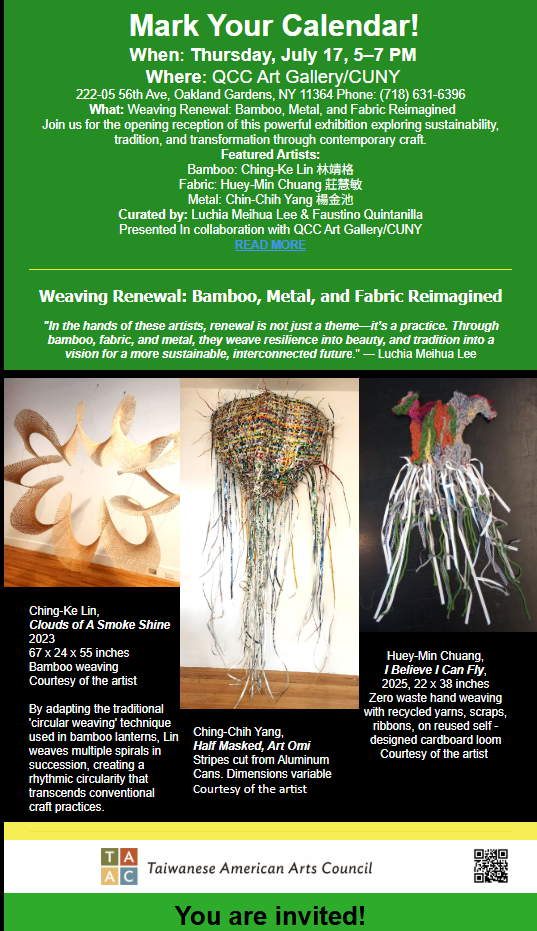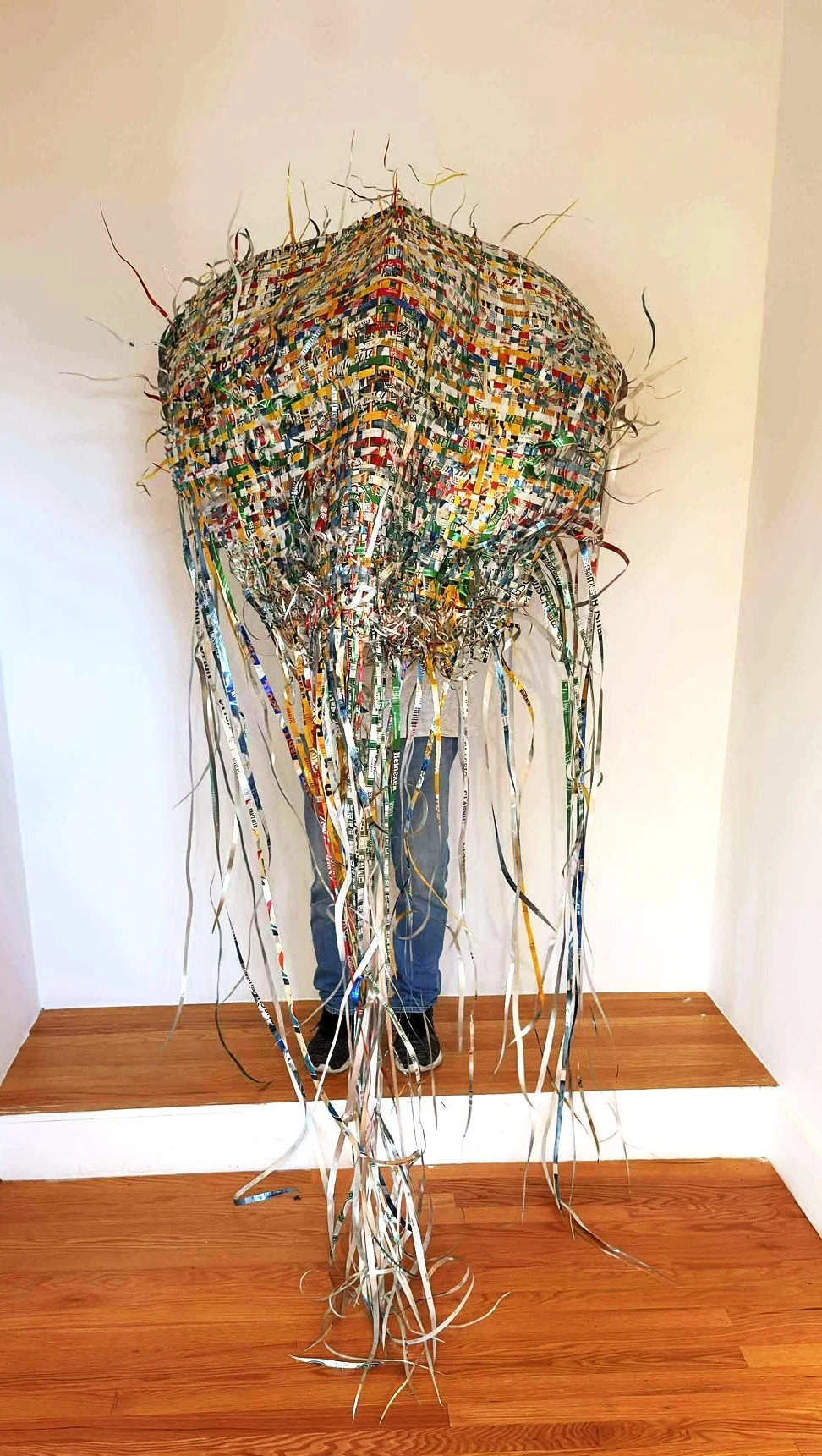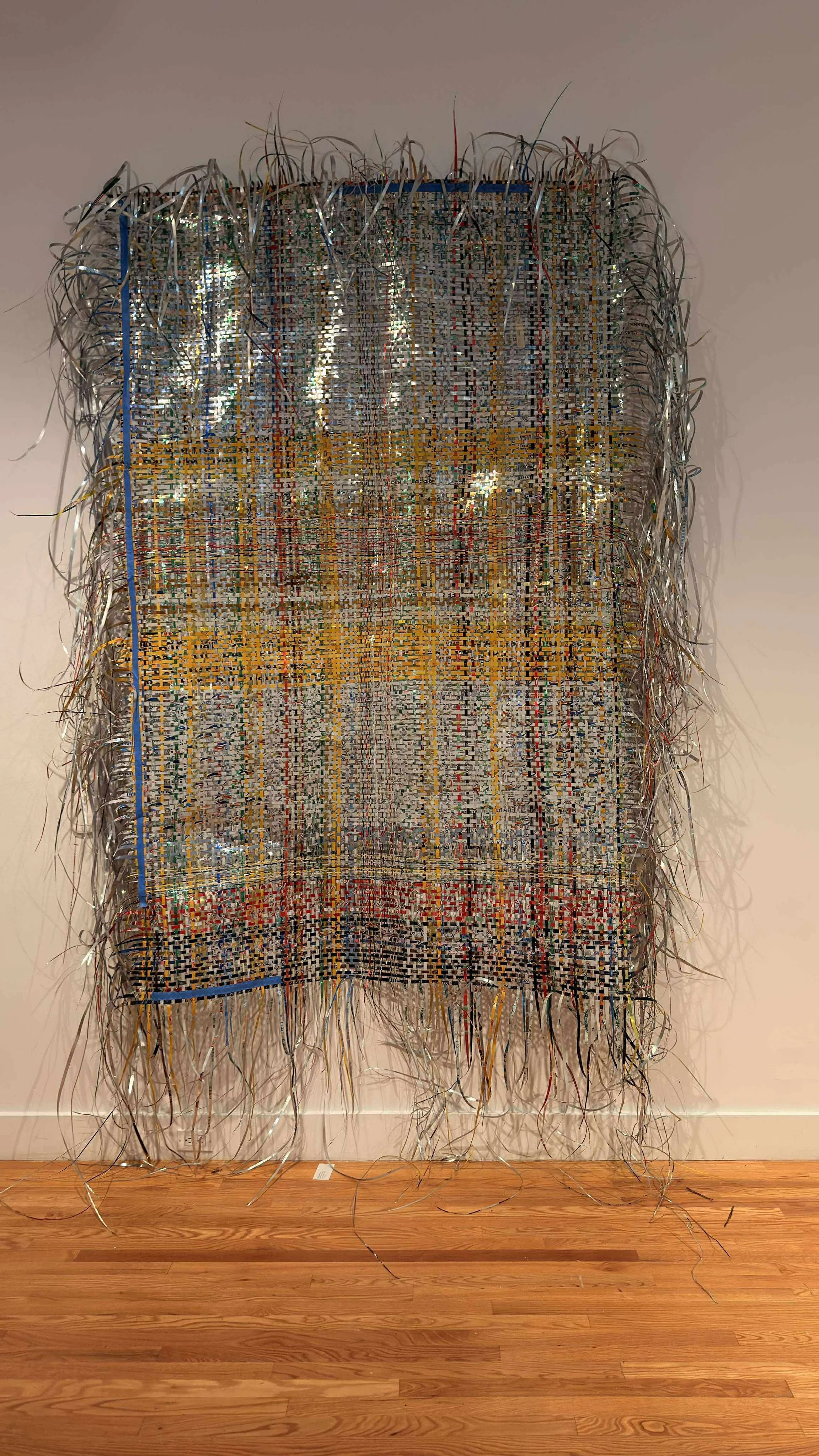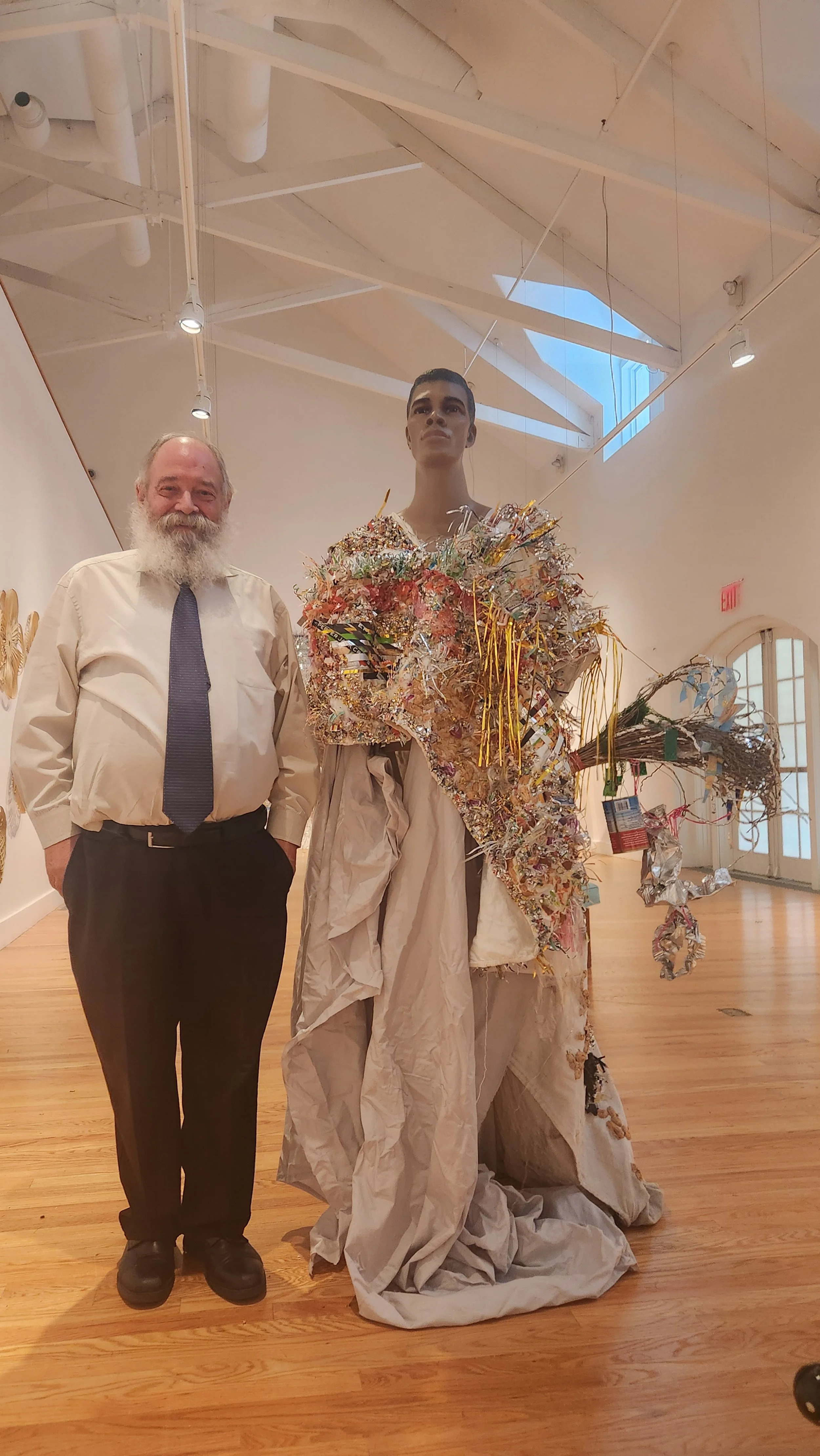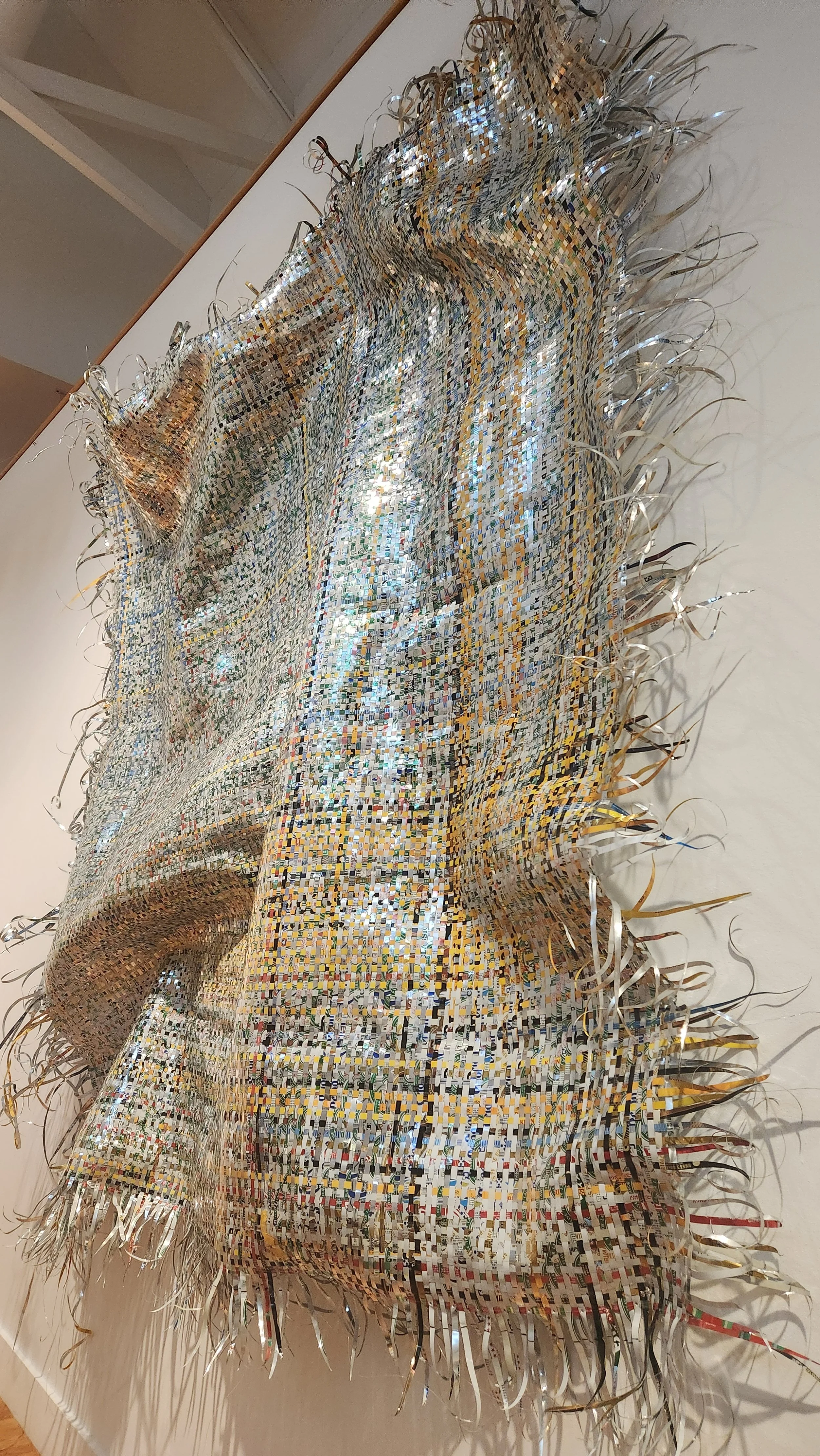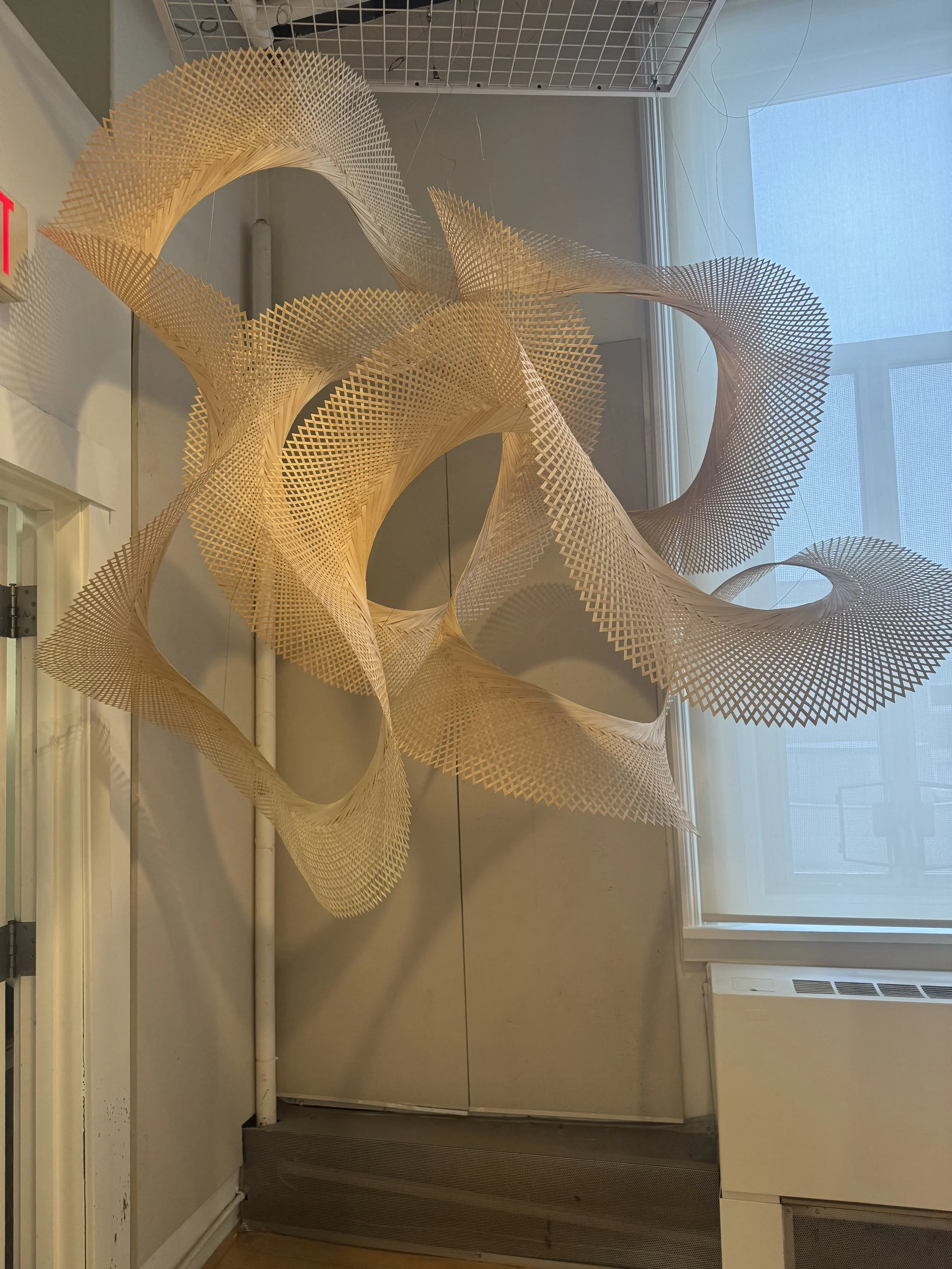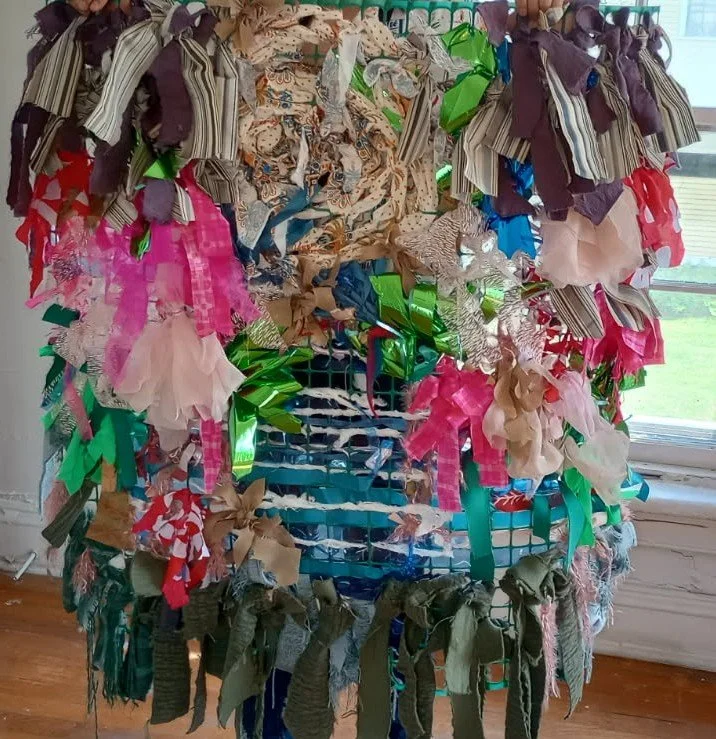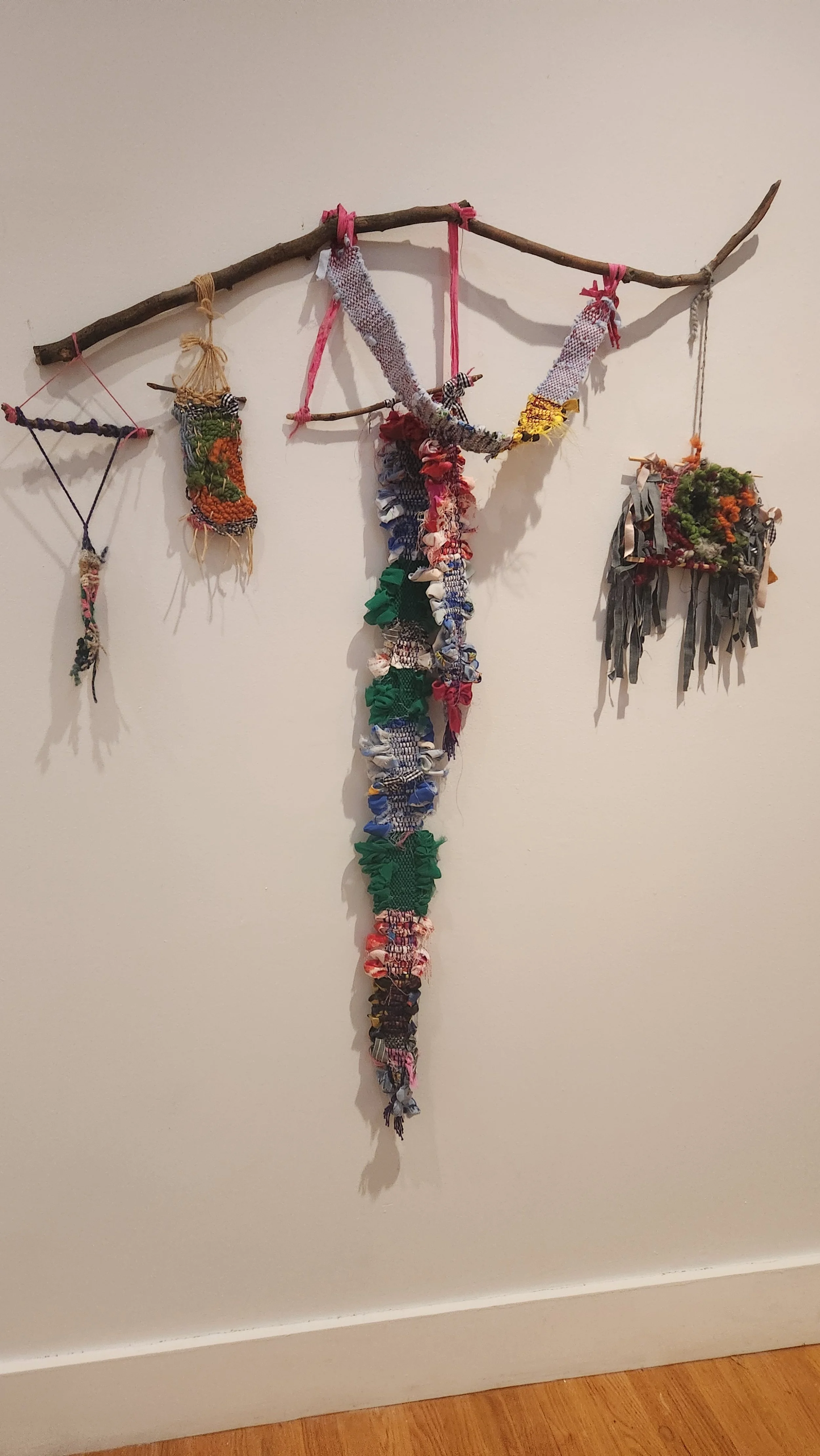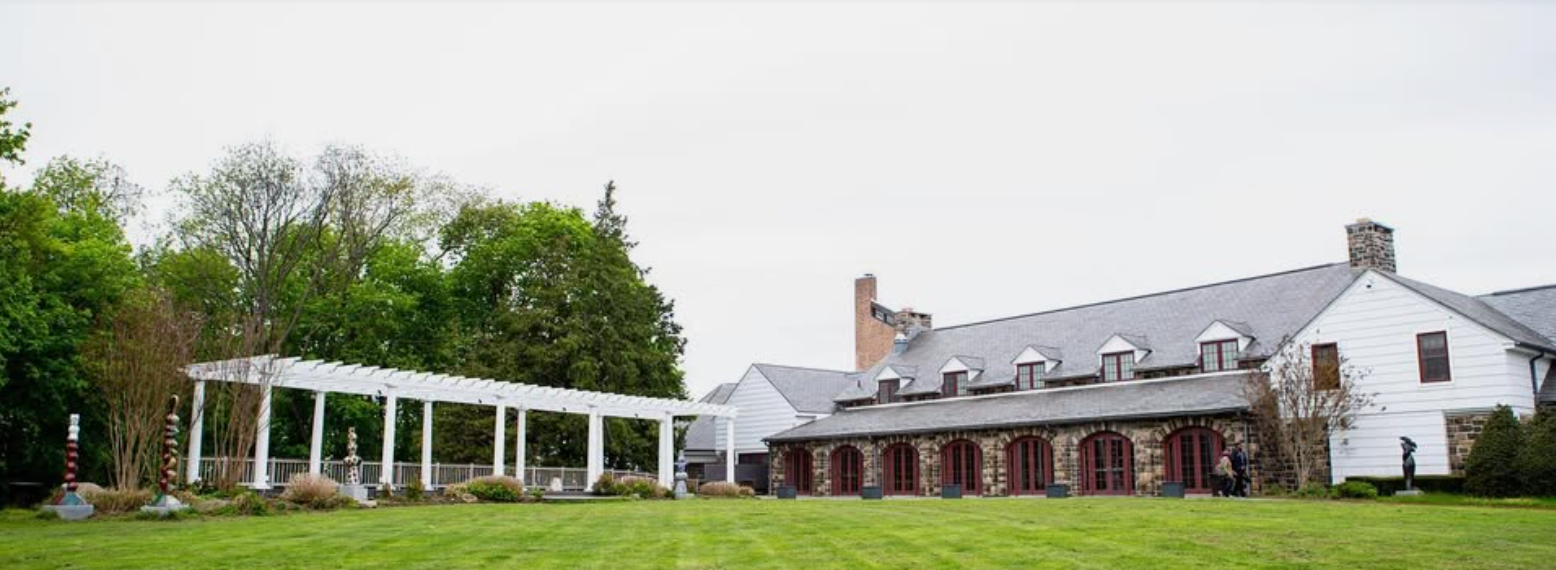
Opening Reception:
Thursday, July 17
5–7 PM
QCC Art Gallery / CUNY
222-05 56 Avenue, Oakland Gardens, NY 11364
Phone: 1 718 631 6396
Weaving Renewal: Bamboo, Metal, and Fabric Reimagined
Weaving Renewal: Bamboo, Metal, and Fabric Reimagined
In the hands of these artists, renewal is not just a theme—it’s a practice. Through bamboo, fabric, and metal, they weave resilience into beauty, and tradition into a vision for a more sustainable, interconnected future." — Luchia Meihua Lee
June 26-September 26, 2025
222-05 56th Ave, Oakland Gardens, NY 11364, Phone: +1 718 631 6396 https://artgallery.qcc.cuny.edu/
Participating Artists:· Ching-Ke Lin 林靖格· Huey-Min Chuang 莊慧敏
· Chin-Chih Yang 楊金池
Weaving Renewal brings together three Taiwanese artists—Ching-Ke Lin, Huey-Min Chuang, and Chin-Chih Yang—whose works transform everyday and natural materials into powerful statements of renewal and resilience. Through intricate bamboo weaving, zero-waste textile compositions, and shimmering constructions of recycled aluminum cans, these artists reimagine craft traditions in dialogue with pressing environmental and social concerns. Their practices bridge past and present, art and activism, materiality and meaning.
The exhibition invites viewers to consider the possibilities of regeneration—of materials, memories, and cultural practices—through contemporary interpretations of age-old techniques. In their hands, discarded objects and organic forms become vessels of care, critique, and creative reinvention, offering a timely reflection on sustainability, craft legacy, and interconnectedness.
Curators: Luchia Meihua Lee, Faustino Quintanilla
Huey-Min Chuang 莊慧敏
Born in Kaohsiung, Taiwan | Lives and works in Brooklyn, NY
Born in Taiwan, Chuang has lived in Argentina and studied in Germany, Spain, and the U.S. Her multilayered cultural background and experiences of migration inform her art, which explores emotional landscapes and subconscious visions through drawing, acrylic, and mixed media. She often works with discarded materials, imagined scenes, and fragments of memory, creating collage-like compositions that blend the personal and the collective. Her practice reflects on adaptation and survival—how identity is carried and reshaped across borders and time.
Huey-Min Chuang has exhibited widely, including solo shows at the Voelker Orth Museum and the Taiwanese American Arts Council (TAAC) Gallery on Governors Island. Her work was featured in the Marin Museum of Contemporary Art’s International Biennial, where she received an Honorable Mention. She was awarded First Place Jury Prize in the “Double Take Show” at the Trolley Barn Gallery and has participated in numerous group exhibitions with organizations such as the Watercolor Society of Rhode Island, Imago Foundation for the Arts, Puffin Cultural Forum, and The Drawing Rooms.
Her work has been featured in Forbes, U.S. News & World Report, Radio Taiwan International, World News Journal, and The Epoch Times across Taiwan, Hong Kong, and New York. She is listed in the artist registry at White Columns Gallery and has completed two artist residencies with TAAC. As an “Artist in Action” at the Smithsonian-affiliated Annmarie Sculpture Garden and Arts Center, she shared her creative process with public audiences.
In addition to her artistic practice, she serves as a docent at the Brooklyn Museum and is the co-founder of the Bronx Global Learning Institute for Girls, a bilingual charter school providing free education to 500 young girls in the South Bronx. She also contributes to economic development initiatives in New York State, guided by a vision of fostering a more creative and compassionate world.
Clouds of Smoke-Limitless, 2023
71x59x59 inches, Bamboo weaving
The straight and firm bamboo material can exhale smoke clouds, integrating into harmonious and graceful natural curves.The "circular weaving" technique in traditional bamboo art is commonly used to make lanterns, in which bamboo stripes are stacked at the same angle to form a spiral-shaped round opening with a multi-pointed star look. Using this technique as the structural basis, the artist, Chingke Lin, has created a new giant installation, "Clouds of Smoke," by weaving multiple spirals in succession, creating a circular rhythm that transcends conventional practices. Unlike bamboo art crafts which we used to focus on their structure, function, practicality, or service, "Clouds of Smoke" attempts to leave behind the constraints of traditional sculptural vocabulary. It aims to transform the common material - interwoven and permeable bamboo stripes - that has been transformed into a more formless, ethereal realm of smoke and clouds, entwining a poetic oriental vibe and guiding the viewer into an endless void.
The work presents the interaction between strength and flexibility, the stillness and movement of space, light, and shadow. "Clouds of Smoke" aspires to open up a new imagination of bamboo sculpture in the pursuit of ultimate balance and harmony -- bamboo art can transcend the conventional impression of the local and bring a poetic visual impact.
I Believe I Can Fly, 2025. 22 x 38 inches
The artwork was made from zero waste hand weaving with recycled yarns, scraps, ribbons, on a reused self - designed cardboard loom.
This fiber artwork with zero waste materials is inspired by the early morning quiet and the first hours of daylight. Stitches and interweaving began a landscape of possibilities on an irregular hand made loom. Rows of grey yarns and orange mountain ranges give wide vista into the horizon, soon sprouting forests dot the scenery. Then, a set of wings appear, along with webs of the Dreamweaver, taking flight. I Believe I Can Fly pays homage to the dancer in all of us.
Chin-Chih Yang 楊金池
Born in Taipei, Taiwan. Lives and Works in New York City
Yang was born in Taiwan, and has resided for many years in New York City, where he studied at Pratt Institute and Parsons School of Design.
An experienced multidisciplinary artist, his interests in the environment has resulted in interactive performances and installations that have been exhibited nationally and internationally. He has exhibited/performed in such spaces as: Rockefeller Center, the United Nations, Union Square Park, Chelsea Art Museum, Queens Museum, the Godwin-Ternbach Museum, Exit Art, and Flux Factory and Taipei Art Fair. His work uniquely incorporates the actual rhythms and discords of human society, exhibiting them in terms of the waste materials wantonly discarded by industrialized production. Finding the modern world both disturbing and entrancing, he aims in his work to capture the complex state of anxiety and compulsive fascination specific to the contemplation of contemporary social problems. His performances often dramatize the divided quality of the self, and he uses video projections to create a discordant ambience specific to the themes of his performances. Chin Chih Yang's work has been highlighted in The New York Times, the Taipei Times, CBS, NY Art Beat, the Village Voice, Time Out New York, Flavorpill and Art Asia Pacific magazine. And NY1.
Ching-Ke Lin 林靖格
Born in Taipei, Taiwan. Lives and Works in Taiwan
Ching Ke Lin is a bamboo artist, who keeps delving into the land, exploring the common ground between humans and bamboo, and refining his creative vocabulary that follows the laws of nature. Realizing that bamboo is tough yet flexible, expressing a philosophy of life, creative potential, and technical culture of humankind beyond time and space, Lin has embraced his devotion to the spirit of all things, traveling into nature and exploring the bamboo world with his playful heart. His installations and landscape works have subverted the public’s conventional image of bamboo craftsmanship and have always conveyed a childlike and humorous insight into ordinary life, evoking people’s affection for the land and environment. Furthermore, Lin has been commissioned by Uniqlo, Mercedes-Benz, New Balance, Nousaku, KITOKITO TOYAMA, 7-Eleven, and PX Mart. In his unbounded thinking in design, experimentation, ideas and practices, Ching-ke Lin expects to continue to look at the present and past of the industry from a wider perspective to dissolve the barriers between people, bamboo, time and space, breaking the traditional image of bamboo, and creating a contemporary look for the material.
Clouds of Smoke-Shine /雲煙 光芒 , 2024. Bamboo weaving, Dimensions variable
The straight and firm bamboo material can exhale smoke clouds, integrating into harmonious and graceful natural curves.
The "circular weaving" technique in traditional bamboo art is commonly used to make lanterns, in which bamboo stripes are stacked at the same angle to form a spiral-shaped round opening with a multi-pointed star look. Using this technique as the structural basis, the artist, Ching-ke Lin, has created a new giant installation, "Clouds of Smoke," by weaving multiple spirals in succession, creating a circular rhythm that transcends conventional practices.
Unlike bamboo art crafts which we used to focus on their structure, function, practicality, or service, "Clouds of Smoke" attempts to leave behind the constraints of traditional sculptural vocabulary. It aims to transform the common material - interwoven and permeable bamboo stripes - that has been transformed into a more formless, ethereal realm of smoke and clouds, entwining a poetic oriental vibe and guiding the viewer into an endless void.
The work presents the interaction between strength and flexibility, the stillness and movement of space, light, and shadow. "Clouds of Smoke" aspires to open up a new imagination of bamboo sculpture in the pursuit of ultimate balance and harmony -- bamboo art can transcend the conventional impression of the local and bring a poetic visual impact.
Suspended in the sky like a woven dream, "Infinite Realms" unfolds as an endless canvas embodying the limitless possibilities of the universe. This piece, crafted from intricately woven bamboo, is built around delicate and diverse patterns, resembling the intricate and ever-changing designs of a kaleidoscope. These images are not merely decorative; they pay homage to the land. This artwork transforms the porch into a bridge connecting past and future; it offers viewers a vision of a world filled with infinite possibilities

